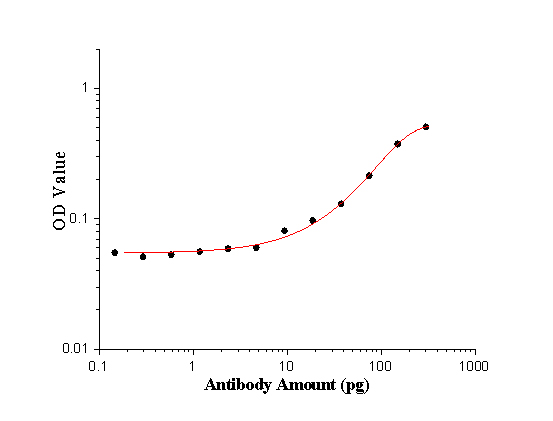Tested Applications
| Positive ELISA detected in | peptide |
Recommended dilution
| Application | Dilution |
|---|---|
| Enzyme-linked Immunosorbent Assay (ELISA) | ELISA : 1:10-1:100 |
| It is recommended that this reagent should be titrated in each testing system to obtain optimal results. | |
| Sample-dependent, Check data in validation data gallery. | |
Published Applications
| WB | See 5 publications below |
| IHC | See 5 publications below |
| IF | See 5 publications below |
Product Information
24492-1-AP targets GA repeat in WB, IHC, IF, Dot Blot, ELISA applications and shows reactivity with human samples.
| Tested Reactivity | human |
| Cited Reactivity | human, mouse, drosophila |
| Host / Isotype | Rabbit / IgG |
| Class | Polyclonal |
| Type | Antibody |
| Immunogen |
Peptide Predict reactive species |
| Full Name | GA repeat |
| Gene Symbol | |
| Gene ID (NCBI) | |
| RRID | AB_2879571 |
| Conjugate | Unconjugated |
| Form | Liquid |
| Purification Method | Antigen affinity purification |
| Storage Buffer | PBS with 0.02% sodium azide and 50% glycerol, pH 7.3. |
| Storage Conditions | Store at -20°C. Stable for one year after shipment. Aliquoting is unnecessary for -20oC storage. 20ul sizes contain 0.1% BSA. |
Background Information
The C9orf72 "GGGGCC" repeat sequence codes five repeat peptide "GA repeat; GAGAGAGAGA", "GP repeat; GPGPGPGPG", "GR repeat; GRGRGRGRG", "AP repeat; APAPAPAPA" and "PR repeat; PRPRPRPRP". It was described previously that aggregated forms of poly-GA and poly-GP proteins do not enter the separation gel (PMID: 26374446). This antibody is used to detect the "GA repeat" sequence. This antibody detects the GAGAGAGAGA peptide with dilution 1:32,000 in Elisa.
Publications
| Species | Application | Title |
|---|---|---|
Nat Neurosci Human ALS/FTD brain organoid slice cultures display distinct early astrocyte and targetable neuronal pathology. | ||
EMBO Mol Med Active poly-GA vaccination prevents microglia activation and motor deficits in a C9orf72 mouse model. | ||
Neuropathol Appl Neurobiol Neurodegeneration in Frontotemporal Lobar Degeneration and Motor Neurone Disease associated with expansions in C9orf72 is linked to TDP-43 pathology and not associated with aggregated forms of dipeptide repeat proteins. | ||
Hum Mol Genet Modelling C9orf72 dipeptide repeat proteins of a physiologically relevant size. | ||
Stem Cells C9orf72 Hexanucleotide Expansions Are Associated with Altered Endoplasmic Reticulum Calcium Homeostasis and Stress Granule Formation in Induced Pluripotent Stem Cell-Derived Neurons from Patients with Amyotrophic Lateral Sclerosis and Frontotemporal Dementia. | ||
J Biol Chem eIF5 stimulates the CUG initiation of RAN translation of poly-GA dipeptide repeat protein (DPR) in C9orf72 FTLD/ALS |




